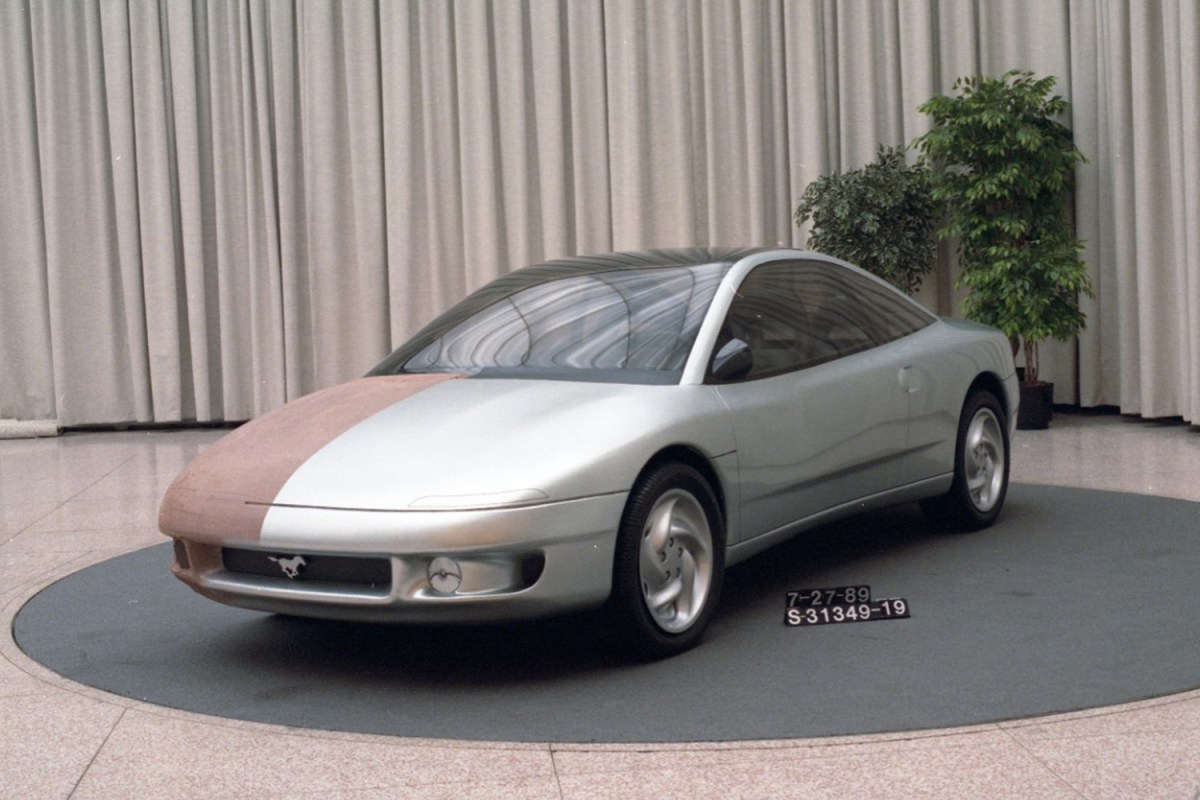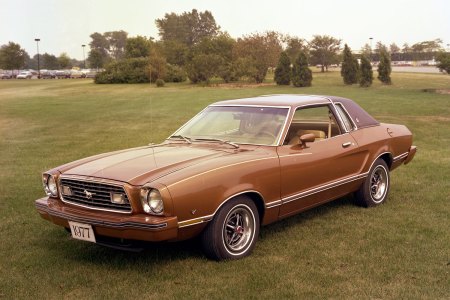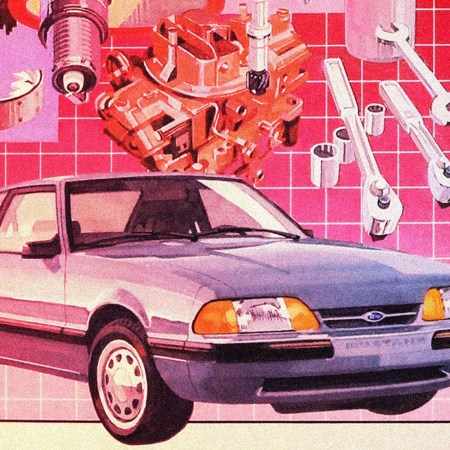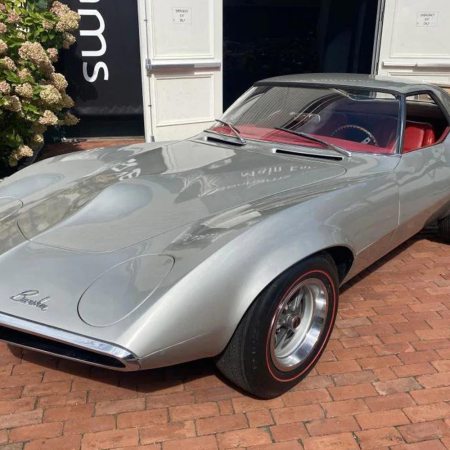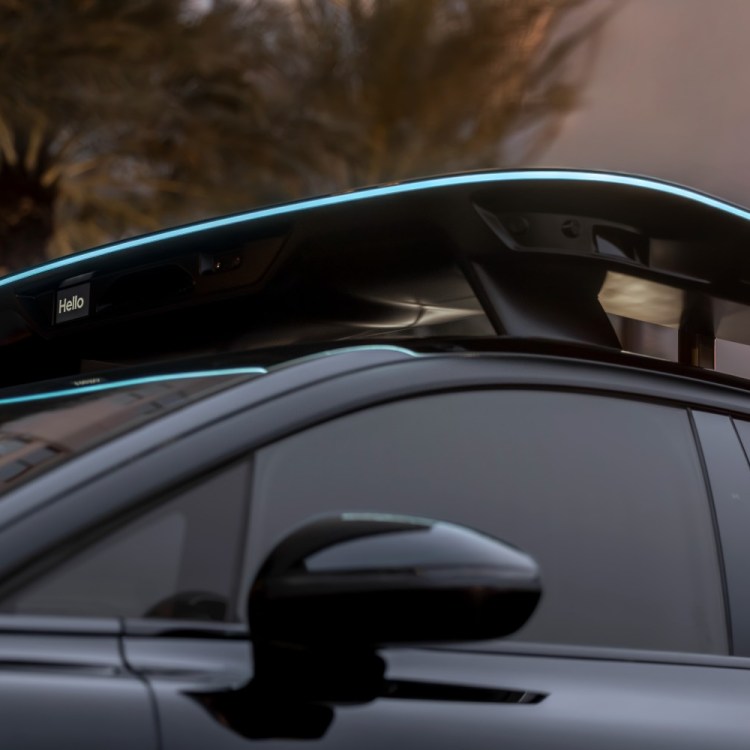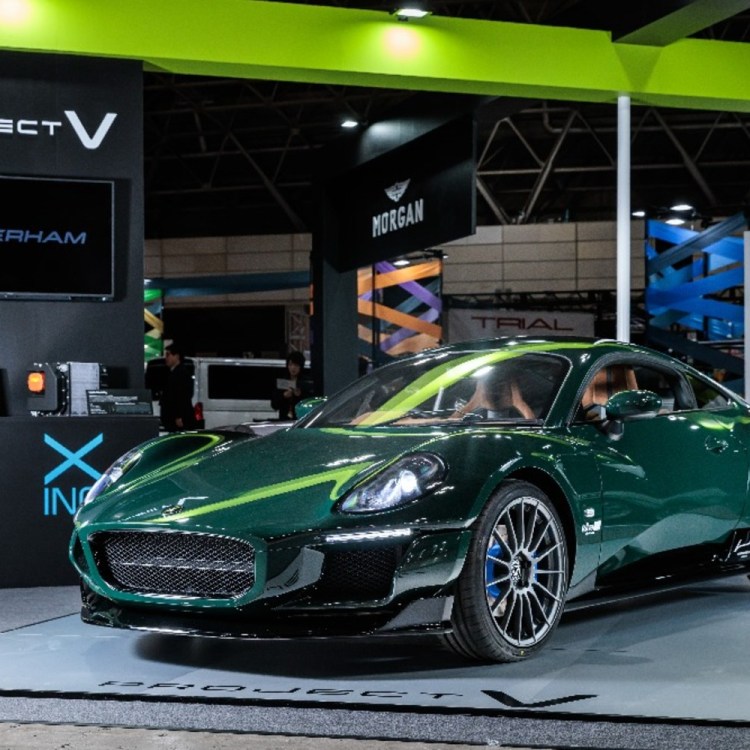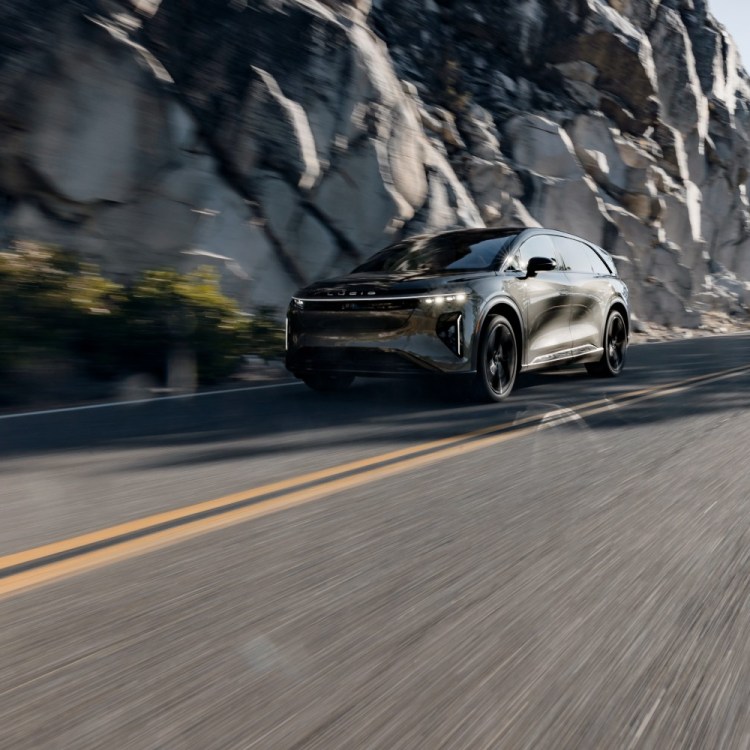April marks the 60th anniversary of the Ford Mustang, which has been in production since 1964. To recognize the occasion, InsideHook is running stories all month long celebrating, dissecting and probing the legacy of the world’s first pony car. Here’s to another 60 years.
If given the choice to buy one of two cars, which of these would you pick: an automotive relic that’s seemingly past its heyday, or a vehicle with the latest cutting-edge technologies? Few customers today would argue the case for the old-school cruiser, and yet that’s exactly what happened in the late 1980s when Ford was confronted with a public outcry over the sunsetting of the long-in-the-tooth Fox-body Mustang in favor of an all-new sports car.
The Fox platform, used in cars across Ford’s lineup, was a hangover from the 1970s — a do-everything, rear-wheel drive anachronism. Outshone by newer models in terms of efficiency, comfort, handling and conformity to constantly shifting emissions regulations, by the time the Fox was a decade old, only the Mustang counted on the platform as part of its future, with nearly every single other car that used it (including the Lincoln Mark VII, Ford Thunderbird, Ford LTD and Mercury Cougar) either dormant or on the verge of graduating to more modern underpinnings of their own.
It seemed natural, then, that the Mustang plot a similar course. In the 1980s, sales of the third-generation Fox Mustang started off slow before peaking at 224,000 units in 1986; despite cracking 200,000 a year in ’88 and ’89, for the most part sales hovered at half that number or less for the rest of its lifespan. Much of the market share for small, sporty coupes began to be eaten up not by thundering echoes of the original muscle-car era, but rather by front-wheel drive, turbocharged pocket rockets like Chrysler’s lineup of Mitsubishi-sourced hatchbacks (the Eagle Talon/Plymouth Laser) and more modestly motivated but handling-focused imports such as the Honda Prelude.
Then there was the GM-80 project, a top-secret initiative in which General Motors had spent millions of development dollars attempting to transform the also-archaic Chevrolet Camaro and Pontiac Firebird twins into front-wheel drive machines in their own right. The automaker had played its cards very close to the chest, but media leaks had kept Ford’s top brass apprised of the plan to scrap the old-school formula for both cars.
It was with all of this in mind that Ford hatched its Mustang succession strategy: out with the old car, and in with a designed-somewhere-else front-puller of its own. It would have been the perfect plan, too, if it weren’t for those pesky customers.
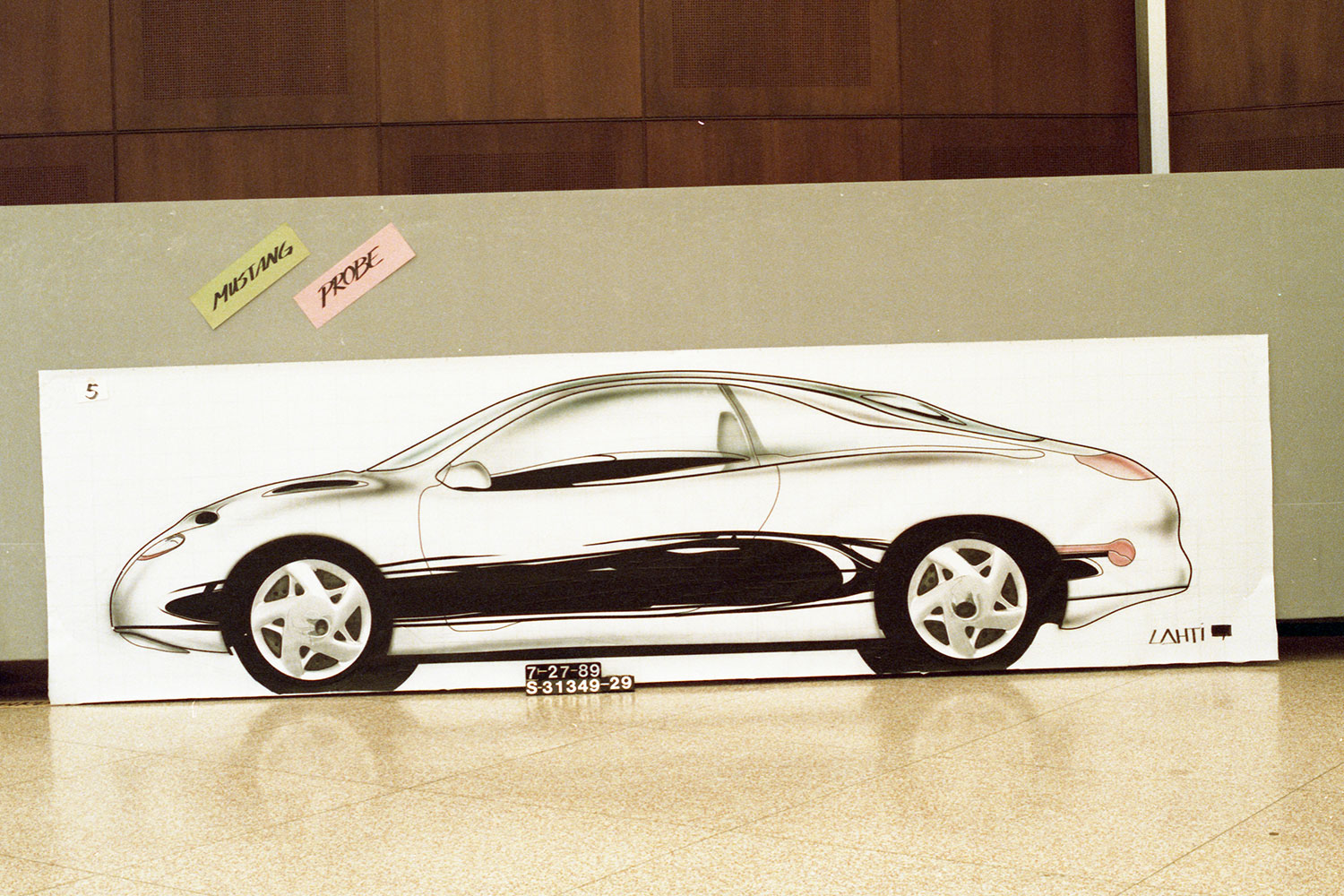
The Grass Is Always Greener (and Cheaper)
Just like Chrysler and Mitsubishi’s close vehicle development relationship (managed under a separate company called Diamond Star Motors that brought such luminaries to the United States as the Mitsubishi 3000GT/Dodge Stealth), Ford had its own captive import program in the form of a significant ownership stake in Japan’s Mazda. It was a team-up that stemmed from the latter’s desire to crack the American market in the ‘60s and ‘70s, and resulted in rebadged and platform-shared compacts like the Ford Courier truck and the Ford Escort picking up the slack at the low end for the American automaker (while also bolstering its SUV and pickup lineups by contributing design expertise to both the Ranger and Explorer).
Turning to Mazda for help with a Mustang replacement made a lot of sense. The former company had an established motorsports pedigree with the RX-7 line of sports cars, and while there was no room in Ford showrooms for something as exotic as a rotary engine, Mazda’s intense investment in front-wheel drive platforms promised a much more marketable payoff — especially if it was paired with any of the turbocharged drivetrains that were being developed alongside them. The new Mustang was codenamed ST-16 within the company, and development went full steam ahead.
It seemed like a can’t-lose proposition. For Ford, it instantly benefited from low-cost access to an up-to-date chassis that could accommodate both turbo-four and potentially V6 power under the hood, each of which was light years ahead of whatever the EPA might dream up next in terms of emissions and fuel-economy regulations. The fact that the mechanical package came wrapped in an of-its-time sporty wedge shape was merely a bonus for the product planners in Dearborn who could easily see where the new coupe slotted in alongside existing rivals.
Mazda’s side of the equation was equally freighted with good vibes, as it would reap the benefits of building as many nu-Mustang models as it could sell to Ford while also producing a version of the car for its own customers.
Confessions of a Four-Time Ford Mustang Owner
“I’ve owned more Ford Mustangs than most, not as many as some.”The Secret Gets Out
Everything seemed to be going smoothly for the Fox-body Mustang’s retirement as Ford and Mazda hit the midway mark of the 1980s, when two unexpected revolts — one internal, and one at the gates — put the entire project in jeopardy.
In the spring of 1987, Autoweek got wind of the Mazda-Mustang and brought that news to its readers in the form of a sketch that, while containing more than a little RX-7 DNA, accurately predicted what the upcoming car would look like. It was the accompanying text, however, that really sent the Ford faithful spiraling out of control. It described, in broad strokes, exactly which pieces of the Mazda parts bin would be commandeered to create a front-wheel drive “Mazstang,” ruling out the presence of a V8 engine and suggesting that a V6 would top the order sheet in terms of power (with a turbocharged four-banger nipping at its heels).
Despite follow-on claims that the lighter Mazda machine would be just as fast as the existing Mustang in a straight line and would likely lap it on a road course, Ford fans were incensed. It seems that the company had underestimated the emotional impact of the pony car, which represented one of the few throwback driving experiences left in a world that had taken a hard left away from the golden age of eight-cylinder excess of the late-1960s. A campaign began to mount among fan clubs, individual owners and performance enthusiasts to stay the Mustang’s execution — and eliminate this Mazda-sourced abomination.
While this mob was forming outside Ford’s factories, its own employees were engaged in an uprising of their own. Leading the charge was none other than John Coletti, the luminary behind nearly every important high-performance Ford project in the ‘80s, ‘90s and 2000s, and, at the time of the faux-Stang’s development, the man in charge of the Mustang it was intended to displace. According to an interview with Hagerty, Coletti found out about the ST-16 project only after it was well underway, and was so opposed to the idea of a V8-less version of the car that he petitioned upper management to the point where they gave him enough funding to improve the Mustang platform (albeit hidden as much as possible from the oversight of the company’s executives).
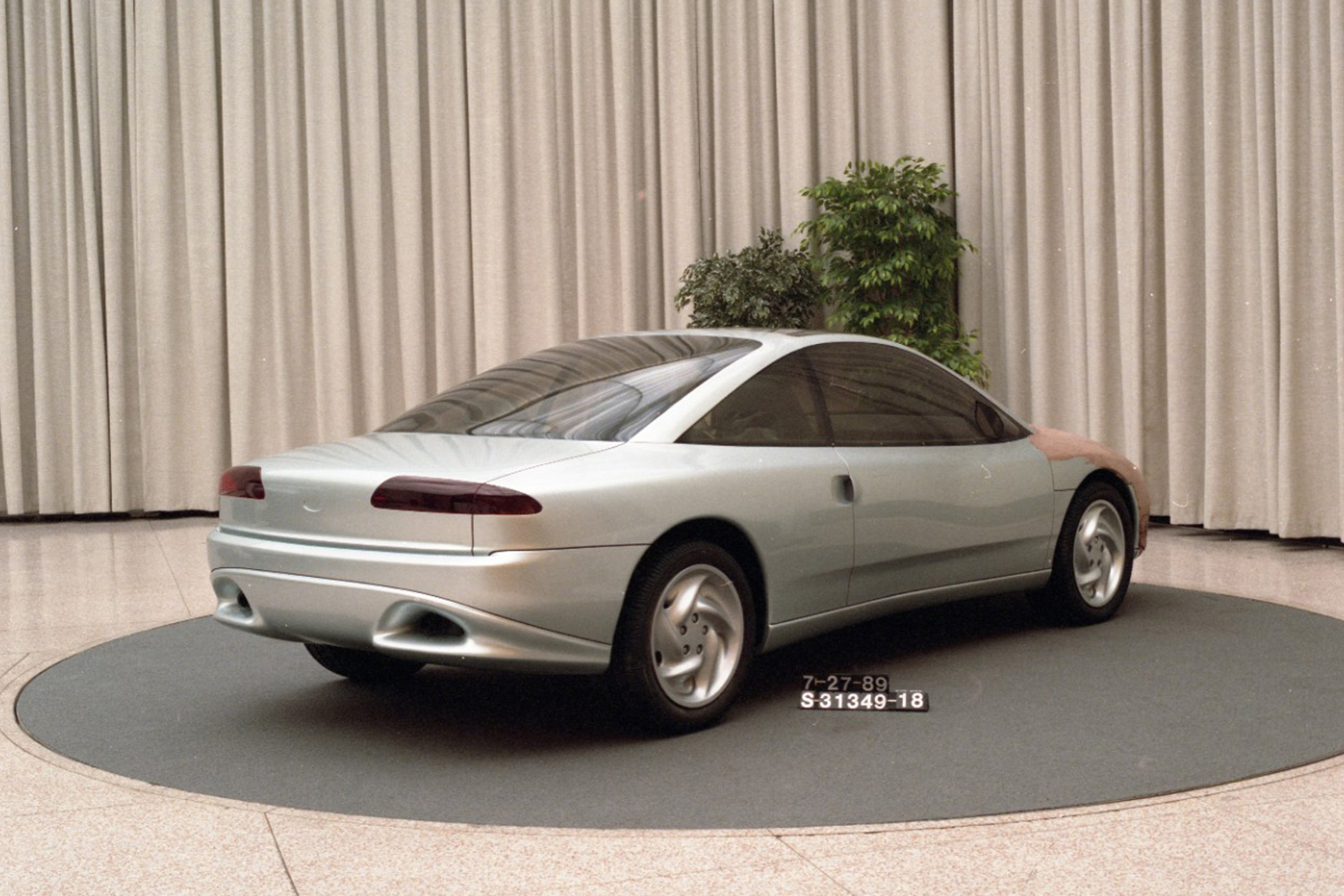
A Win-Win, With Far-Reaching Consequences
It’s here that history hinges. Ford was not about to walk away from the incredible investment it had made in its front-wheel drive Mustang replacement, and with Coletti’s team working on a Hail Mary behind the scenes, the decision was made to bring ST-16 into the world on its own merits, rather than have it fill a Mustang-sized hole in the showroom. This meant that when the new model finally went on sale for the 1989 model year, it did so not under the Mustang name, but as the Ford Probe. It was positioned beside its predecessor as a sibling, not a successor.
In the end, neither the Probe nor its Mazda MX-6 counterpart managed to carve out a substantial slice of real estate in the memory of enthusiasts, but each car was indeed a success for their respective brands, competing well against other sporty compacts (if not commanding the kind of fervent attention applied to all things Honda at that time). It’s intriguing to think of how better received the Probe may have been had it not been tainted from the outset by its anti-Mustang origins, and whether it might still be with us today.
As for the Mustang, Coletti’s crew had diligently reworked the bones of the Fox to the point where it now made financial and competitive sense to continue production forward past its planned cancellation. The coupe and convertible largely sleep-walked their way through the beginning of the 1990s, but in 1994 the newly massaged SN95 Mustang, the fourth-generation model, arrived wearing heritage-inspired looks and, most importantly, lighting up the rear tires by way of a familiar 5.0-liter V8 (that eventually shifted to a DOHC 4.6-liter design in 1996).
This proved to be the saving throw that kept the Mustang relevant well into the next century, where it stands today as the only member of the original muscle car generation still in production.
This article appeared in an InsideHook newsletter. Sign up for free to get more on travel, wellness, style, drinking, and culture.
